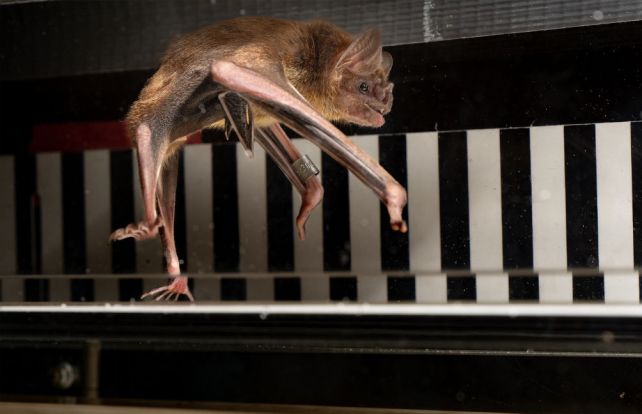In the event you’ve ever thought to your self, “Gee I positive want to see some vampire bats on treadmills,” then do we’ve the science for you. That is precisely what a workforce of scientists has completed, and it isn’t as a result of little Vladi wanted to get his chiropteran steps in.
Moderately, the brand new analysis reveals how vampire bats (Desmodus rotundus) take advantage of out of their major meals supply – the blood they slurp from the mammals on which they feed.
Fascinatingly, the outcomes present a flair for the metabolism of the amino acids within the blood they eat. And, furthermore, it would not take them lengthy to take action. A vampire bat can gallop merrily alongside, fuelled by a meal of blood consumed solely minutes earlier than.
This makes the vampire bat a really uncommon animal certainly, since most vertebrates rely totally on the metabolism of carbohydrates and lipids for power. However the capacity does seem elsewhere within the animal kingdom – in invertebrate animals, resembling blood-feeding Tsetse flies.
It is nicely established that, amongst mammals, low-intensity cardio train is predominantly fueled by lipids. Because the train depth will increase, so too does the reliance on carbohydrates as gasoline. These gasoline sources are oxidized to generate adenosine triphosphate (ATP), the molecule that gives power to residing cells.
How precisely a vampire bat generates ATP from their extraordinarily protein-rich food plan was unclear. However physiologists Giulia Rossi of the College of Toronto and Kenneth Welch of McMaster College in Canada realized they might make use of a trait of vampire bats to search out out.
In contrast to different bat species, vampire bats are excellent at working alongside the bottom. So, they figured they might put bats in treadmills that measure their oxygen consumption and carbon dioxide output to measure their metabolism as they train at totally different intensities. And, with the bats residing quickly within the lab, the researchers may management their meals consumption to find out how that metabolism was working.
frameborder=”0″ enable=”accelerometer; autoplay; clipboard-write; encrypted-media; gyroscope; picture-in-picture; web-share” referrerpolicy=”strict-origin-when-cross-origin” allowfullscreen>
They caught 24 wild grownup vampire bats in Belize, and divided them into teams. One group of 9 bats was fed cow’s blood enriched with leucine, an important amino acid (one which mammals cannot synthesize) that helps construct and restore muscle tissues in people. A second group of 12 bats was fed cow’s blood enriched with glycine, a non-essential amino acid that helps construct collagen and acts as a neurotransmitter.
By swapping the abnormal carbons within the amino acids for a comparatively distinctive isotope, they might monitor what occurred to the component because the compounds broke down within the bats’ our bodies.
The remaining group was fed cow’s blood that was not enhanced with amino acids, to supply a baseline for the CO2 manufacturing of an exercising bat.
After feeding, every bat was popped on the treadmill, custom-built for this analysis. There have been three train intensities; 10 meters (33 toes) per minute, 20 meters per minute, and 30 meters per minute. The treadmill steadily elevated to every goal pace, and the bat’s breath recorded because it scampered alongside the conveyor belt. At high pace, there have been even little airborne hops.
As soon as the bats had been put by way of their paces, the researchers analyzed the speed at which oxygen was consumed, and carbon dioxide produced, the ratio of which is routinely used as an indicator of metabolic gasoline use.
The isotopes revealed the manufacturing of CO2 from the metabolization of amino acids was virtually instantly current within the breath of bats on the treadmill. This implies that the animals had been quickly and effectively making use of their latest protein meals, in contrast to bugs resembling mosquitoes which take longer to metabolize the amino acids within the blood on which they feed.

Apparently, the bats fed the enriched blood confirmed no discrimination between important and non-essential amino acids. Their little our bodies made the many of the assets supplied, no matter these assets had been.
“Our findings recommend that main enhancement of flux by way of these and associated metabolic pathways have developed in vampire bats as an adaptation to make environment friendly use of these fuels ingested in abundance (i.e. blood proteins and amino acids),” the researchers write, “marking a putting instance of convergent evolution amongst each vertebrate and invertebrate obligate blood-feeding animals.”
No bats had been harmed within the making of this analysis. They might, nevertheless, have been somewhat extra in form upon their launch again into the wild.
The analysis has been printed in Biology Letters.





